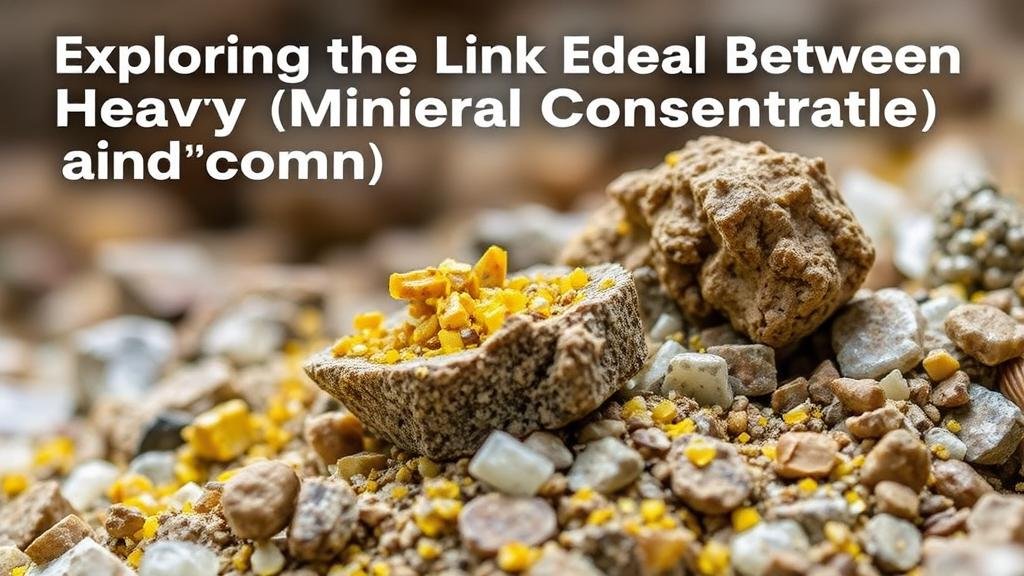Exploring the Link Between Heavy Mineral Concentrates and Gold Paystreaks
Exploring the Link Between Heavy Mineral Concentrates and Gold Paystreaks
The exploration of gold paystreaks, or concentrated deposits of gold, often intersects with the analysis of heavy mineral concentrates (HMC). Understanding this relationship can significantly enhance prospecting strategies in the field of gold mining. This article delves into the connection between HMC and gold paystreaks, elaborating on their geological implications, analytical methods, and practical applications in gold exploration.
Understanding Heavy Mineral Concentrates
Heavy mineral concentrates are fractions of soil or sediment that are enriched in dense minerals relative to the surrounding material. e minerals typically include zircon, ilmenite, rutile, and gold itself, among others. The density of heavy minerals often exceeds 2.85 g/cm³, which allows for their separation through mechanical and chemical processes.
In gold exploration, HMC plays a vital role due to the principal characteristics that make gold distinct within mineral assemblages:
- High density: Gold has a specific gravity of approximately 19.3 g/cm³, making it significantly heavier than many other minerals.
- Resistance to weathering: Gold is chemically inert, which allows it to persist in alluvial deposits over long geological periods.
The Geological Formation of Gold Paystreaks
Gold paystreaks are typically formed through a combination of geological processes such as erosion, transportation, and deposition by water. They often occur in alluvial environments, where flowing water sorts materials based on density. As sediment is carried by rivers, denser materials, including gold, settle in specific locations, creating concentrated paystreaks.
For example, the Klondike River in Yukon, Canada, is well-known for its historical gold paystreaks, where miners utilized these natural processes to locate lucrative deposits. The interplay of water flow and sediment type contributes to the formation of these rich deposits.
Analytical Techniques for Identifying Paystreaks
Recognizing the link between HMC and gold paystreaks requires employing various analytical techniques. Each technique offers unique insights into the mineral composition of sediments:
- Pan Concentration: This traditional method involves using a pan to separate gold and heavy minerals from lighter sediment through agitation in water.
- Gravity Separation Methods: Techniques such as spiral concentrators or shaking tables utilize the density difference to isolate heavy mineral concentrates efficiently.
- Magnetic Separation: This method can remove non-gold heavy minerals that could interfere with gold concentration analysis.
Using these methods, prospectors can analyze samples to identify areas with a higher likelihood of gold paystreaks. For example, field studies have shown that sediments containing 10-20% heavy minerals often yield significant gold paystreaks, highlighting the importance of robust sampling techniques.
Real-World Applications and Case Studies
Several mining operations worldwide have successfully leveraged the relationship between HMC and gold paystreaks. For example, the Tanjung Lesung project in Indonesia demonstrated that systematic analysis of HMC led to the discovery of substantial gold deposits. Their exploration team found that by focusing on the HMC in certain local riverbanks, they could estimate potential paystreak locations with a high degree of accuracy.
Another instance is seen in the Witwatersrand Basin in South Africa, where meticulous studies of HMC in certain geological formations informed miners about prospective zones. Many gold mines have relied on historical data regarding HMC to enhance their geological models.
Actionable Takeaways
- Prospectors should prioritize the analysis of heavy mineral concentrates in potential gold mining areas.
- Use a range of analytical techniques to accurately assess sediment composition and identify areas rich in gold paystreaks.
- Study local geological contexts as they significantly influence both the concentration of heavy minerals and the formation of paystreaks.
By understanding the intricate relationships between heavy mineral concentrates and gold paystreaks, prospectors and mining companies can optimize their exploration efforts, reducing costs and increasing efficiency in gold recovery operations.



